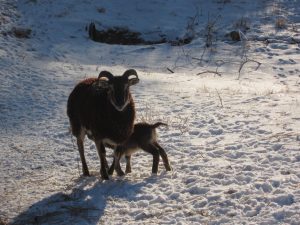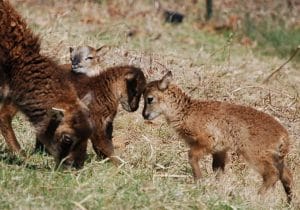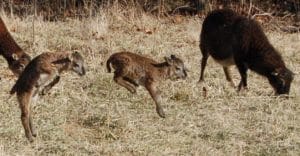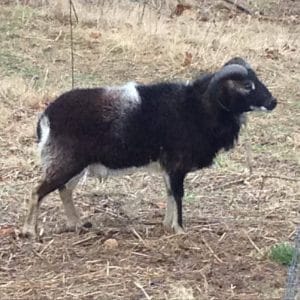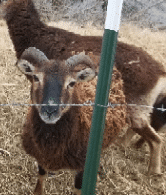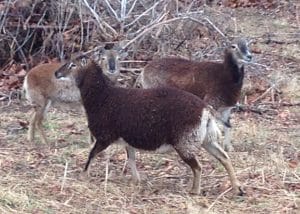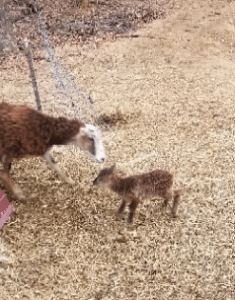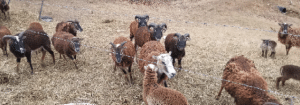Soay Sheep
We raise soay sheep, which are one of the oldest heritage breeds still walking the earth. This is probably what sheep looked like in the stone age. Millions of years before early farmers began controlled breeding to select for whiter wool, long before Rome conquered Britain, before the Celts ruled, perhaps about the time Stonehenge was built, this is what sheep probably looked like across Europe. They have been preserved for us through small flocks that were carried to small islands around Great Britain in prehistory and then left to fend for themselves for hundreds of years at a time.
In some ways, soay seem more like modern goats than modern sheep. They eat like goats but do not have the drawbacks of that breed. They are also heartier and easier than other sheep to maintain. They have variegated, primarily dark wool that is a bit different in the winter than in the summer. They do not need to be sheered. To preserve the wool for spinning, you would roo, or simply pull the winter wool away from the skin in the spring with it released naturally. If a human does not roo a sheep, they will simply remove it themselves by running against a tree.
They are extremely easy to raise compared to all other sheep. You do not dock their tails. They have naturally short tails. I don’t know of anyone who castrates their young male soay. If you avoid processing during the time they are in rut, the meat will not taste gamy as other uncastrated sheep might. They seem to be immune to worms and I’ve never had to trim hooves. They mature quickly and will have their first baby at the end of their first year.
Soay prefer brush to grass, which makes them valuable to cleaning off damns and and other areas that need to remain fairly open. For this purpose they are more valuable than most goats because they are less likely to escape a fenced area. Because their most favorite food seems to be poison ivy, it can be helpful to run them through wooded areas for a brief period of time to clean out the poison ivy, multifloral rose and some of the other fast growing invasive brush. They are not picky eaters.
Drawbacks to the breed are that they are small. This can make them a lot less efficient as a commercial food source. They don’t herd as well as other sheep and, as a pet, they aren’t as easy to tame as most modern breeds.
